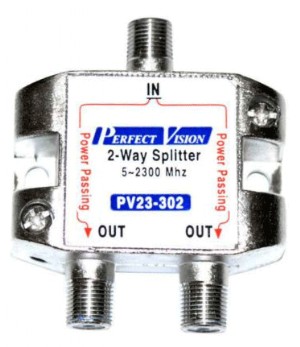Here’s a question that came through our customer service department. You’d think it would be a perfect one for me to answer, “well it really depends.” And, yeah, it kinda does which I will explain in a minute, but for a lot of uses, there’s one splitter that really outshines them all.
You probably don’t need an expensive splitter, and here’s why
Splitters themselves aren’t terribly difficult to make. Open up an average splitter and you’ll find no expensive electronics, no pile of computer chips. You’ll find some wires, and something that looks like a lump of plastic in the middle. That’s where the actual split happens. There’s sometimes some sort of surge protection, or a full-on DC block to make sure current doesn’t pass through. There’s usually some sort of engineering to make sure signals from one output port don’t cross over to another output port. And really, that’s about it.
And that means that the only real criteria is how well the thing is made. The splitters you’ll sometimes find at the drugstore or home store aren’t usually made very well. That doesn’t mean they’ll work poorly when you first put them in. It means they’ll probably break sooner. That’s almost worse — in my opinion I’d rather have something that never works instead of something that works just long enough for me to forget about it.
The Perfect Vision splitter
The image at the top of this article is the Perfect Vision 2 way splitter. For my money, it’s well named because it’s perfect for almost any task. It’s rated to work with antennas, cable, or satellite. It passes power through it, which is perfect for things that need amplification. And the best part is that it’s really not terribly expensive.
This splitter has found its place in homes, offices, and commercial installations all over the world. I’ve never heard of one failing. Not ever, in all these years. It’s a tad chunky but that seems to be due to better construction. It has two screw points for grounding and two mount points if you’re putting it on plywood or on a ground plane. What else could you want?
In general you don’t need a fancy splitter or combiner, just something like this will work great. It’s designed for indoor use but with weather boots it will work outdoors too.
The few cases where this splitter won’t work
Like most good splitters, the Perfect Vision splitter is designed to block traffic between output ports. But in some cases, you don’t want that. For example, DIRECTV and DISH both use fancy splitters to connect their servers (Genie and Hopper, respectively) to their clients. Those require special splitters that don’t block communication between ports.
There are also cases where you want a splitter that blocks power. This is helpful when you’re trying to control power surges. In a case like that, choose a different splitter like this Pico Digital unit.
Get the splitter of your dreams
You’ll find a lot of different splitters, one for every need, when you shop the great selection at Solid Signal.




